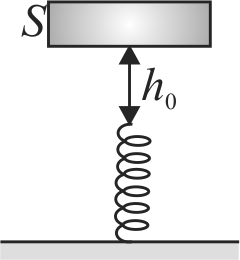355346 A ball is placed on a massless spring that is held at an angle of \(\theta\) with respect to the horizontal. The spring is then compressed a distance of \(x\) and released. When the ball reaches the maximum height of its trajectory, it is travelling at a speed \(v\). Then a different ball, weighing four as much as the first, is placed on the spring which is still at an angle \(\theta\). The spring is again compressed at a distance and released. Compared to the first ball, the second ball reaches a maximum height that is
355346 A ball is placed on a massless spring that is held at an angle of \(\theta\) with respect to the horizontal. The spring is then compressed a distance of \(x\) and released. When the ball reaches the maximum height of its trajectory, it is travelling at a speed \(v\). Then a different ball, weighing four as much as the first, is placed on the spring which is still at an angle \(\theta\). The spring is again compressed at a distance and released. Compared to the first ball, the second ball reaches a maximum height that is
355346 A ball is placed on a massless spring that is held at an angle of \(\theta\) with respect to the horizontal. The spring is then compressed a distance of \(x\) and released. When the ball reaches the maximum height of its trajectory, it is travelling at a speed \(v\). Then a different ball, weighing four as much as the first, is placed on the spring which is still at an angle \(\theta\). The spring is again compressed at a distance and released. Compared to the first ball, the second ball reaches a maximum height that is
355346 A ball is placed on a massless spring that is held at an angle of \(\theta\) with respect to the horizontal. The spring is then compressed a distance of \(x\) and released. When the ball reaches the maximum height of its trajectory, it is travelling at a speed \(v\). Then a different ball, weighing four as much as the first, is placed on the spring which is still at an angle \(\theta\). The spring is again compressed at a distance and released. Compared to the first ball, the second ball reaches a maximum height that is


